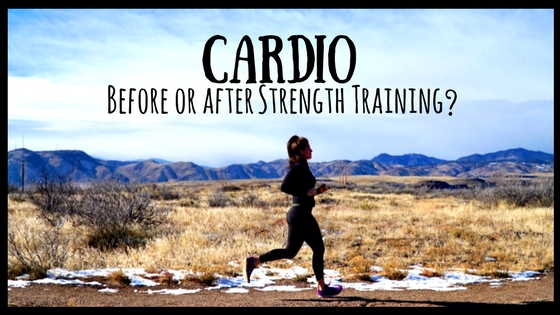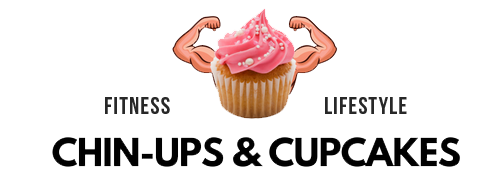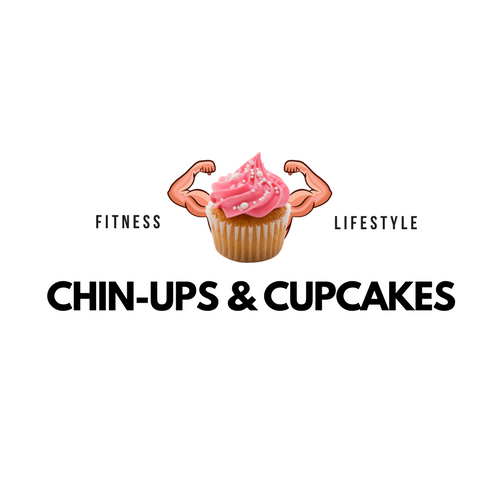
Cardio
Cardio: When Should I Do It?
“Should I be doing my cardio before or after my strength training workout?” Great question! This post will cover the importance and benefits of cardiovascular exercise as well as the different forms that we can perform. Once we know these details, I’ll tell you what I think!
Heart and Lung
Cardio is extremely important for our heart and lung health. The heart is a muscle and like all of our other muscles it needs to be exercised. If we don’t regularly perform cardio, the heart will weaken. This is often the case when we have a hard time walking uphill or climbing stairs. Cardiovascular exercise is crucial to maintaining heart health.
Metabolism and EPOC
A huge benefit that we get out of doing cardio is a boost in our metabolism! Metabolism is the process in our body that takes the energy from the food we consume and combines it with oxygen to give our body the energy it needs to function. An elevated heart rate increases this process, therefore the higher intensity of your exercise the better. High intensity interval training creates the highest EPOC (Excess Post-Exercise Energy Consumption) effect. Oxygen consumption after exercise remains elevated for a short time in order to restore your body to it’s normal resting state (muscle repair, temperature, etc…)
According to the American Council on Exercise, consuming 1 liter of oxygen burns approximately 5 calories. Therefore, increasing the amount of oxygen consumed during and after your workout leads to an increase in the amount of calories burned.
Total body circuit training and heavy compound lifts with a short or active rest interval will yield a significant EPOC effect. However, High Intensity Interval Training (HIIT) is the most effective form of cardio exercise. Remember, EPOC is influenced by intensity, not duration. It is recommended that a person get a minimum 75 minutes weekly of HIIT. That’s five 15 minute sessions per week. Totally doable, right?!
Recap: Ways to increase the intensity of your workout:
- Utilize heavier weights when lifting
- Shorter breaks in between lifting sets
- Active rests (jumping jacks, burpees, etc…) in between lifting sets; this is continuous movement
- Higher intensity cardio exercise
Endorphins
Cardio exercise is a stress reliever and a mood booster. It activates a release of endorphins (the feel good chemical) in our body. Do you need any other reason to do it? If you’d like to read more about endorphins, click HERE.
“Oh for the love of DOMS”
Performing moderate cardiovascular exercise after your strength training session can help decrease recovery time. A light jog or even a walk after a heavy lifting session will greatly reduce Delayed Onset Muscle Soreness (DOMS) by helping to remove any byproduct produced during a lifting session (i.e. lactic acid).
Moderate cardio activity brings oxygen rich blood to the muscles aiding in the recovery process. It is recommended that a person get at minimum 150 minutes of moderate cardio exercise in per week. Five 30 minute sessions will keep your heart healthy and your metabolism up. Keep in mind that you can do more than this, however doing too much cardio can hinder the recovery process. The quicker that you can recover, the sooner you can workout again.
Recap: Types of Cardio
- High Intensity Interval Training (Sprints) / 75 minutes weekly
OR
- Moderate Cardiovascular Exercise (Power walk, Jogging) / 150 minutes weekly
BONUS
- Active rests (jumping jacks, burpees, etc…) in between lifting sets; NOT a stand alone source of cardio.
One we did not cover, but is worth mentioning:
- Low Intensity (Walking, Stationary bike) – Good for warmup/cooldown, but not optimal for fat loss
Intensity > Timing
If we’re speaking solely in terms of calories burned, there’s no evidence to prove doing cardio before or after weight training makes any noticeable difference. For those of you mainly concerned with fat loss and calorie burn, it’s up to you when you do it. Keep in mind that intensity is more important than timing. With that being said, as long as you complete the designated weekly minimum times for the type of cardio you perform, you’ll continue to see progress.
Pros and Cons of Cardio Before Lifting
Pros
The majority of the time I do cardio first. Getting it done at the beginning is a good option for a couple reasons. First, it ensures that I won’t skip it. I never worry about skipping strength training because I enjoy it! Cardio… not so much. Get it done and over with is my motto. Second, I treat it as a warm up. My favorite type of cardio is moderate intensity, usually on a elliptical or a steady pace at an incline on the treadmill. Steady state cardio doesn’t burn me out, but gets my muscles nice and warmed up for my lifts.
Cons
One negative effect that I can think of for doing cardio before weight lifting is if you’re performing HIIT training. Intense cardio before a lifting session can have detrimental effects on your lifts. This is not something that I want.
Pros and Cons of Cardio After Lifting
Pros
As we’ve seen, there is evidence that performing cardio after strength training is beneficial for a couple of reasons. High intensity cardio takes a lot of energy out of us. If we were to do this before a lifting session, we may feel a bit burned out. Likewise, performing moderate cardio after a lifting session is beneficial to aid in recovery.
Cons
Weight lifting is more fun than cardio, I think we can all agree on that. It’s also pretty exhausting. One of the problems that I’ve ran into when I’ve tried to do cardio post-strength training is that I lack the energy and drive to actually do it. There have been too many times where I’ve ended up skipping it all together. This is a problem when our weekly goal is to complete our 75 minutes of HIIT or 150 minutes of moderate activity cardio. The last thing we want is to have to do 150 minutes of cardio on the last day of the week, right?
Your Choice
When it comes down to it, it’s truly a matter of preference and what works best for you. There’s not necessarily a right or wrong answer.
“Cardio is important and there’s no choice, you have to do it if you want to be healthy. You do have a choice however, of what kind of cardio you do and when you do it.”
Find the type of cardio you enjoy more. I know that can be hard sometimes because some of us dread it. Do you like to walk or run, sprint or walk at an incline? Doing what you enjoy more, will make it sustainable long term. You can think outside the box too guys. Would you rather do your cardio outside? That’s totally fine. Go for a hike, run or jump rope. Just get moving!
The last thing I’d like to mention is that you don’t necessarily have to stick to five 15 minute sessions of HIIT or five 30 minute sessions of moderate activity cardio per week. You can break it up even further. For example, if you’re going to do moderate activity cardio you can choose to do 15 minutes before and 15 minutes after strength training. The same goes for HIIT. You can always feel free to do more cardio and mix it up! It doesn’t have to be all together, just get it done! Every option offers benefits as long as you stay consistent, but don’t forget to let your body recover.
Have questions? Need help building a workout plan? I’m happy to help! Click HERE.
Until next time…








0 comments